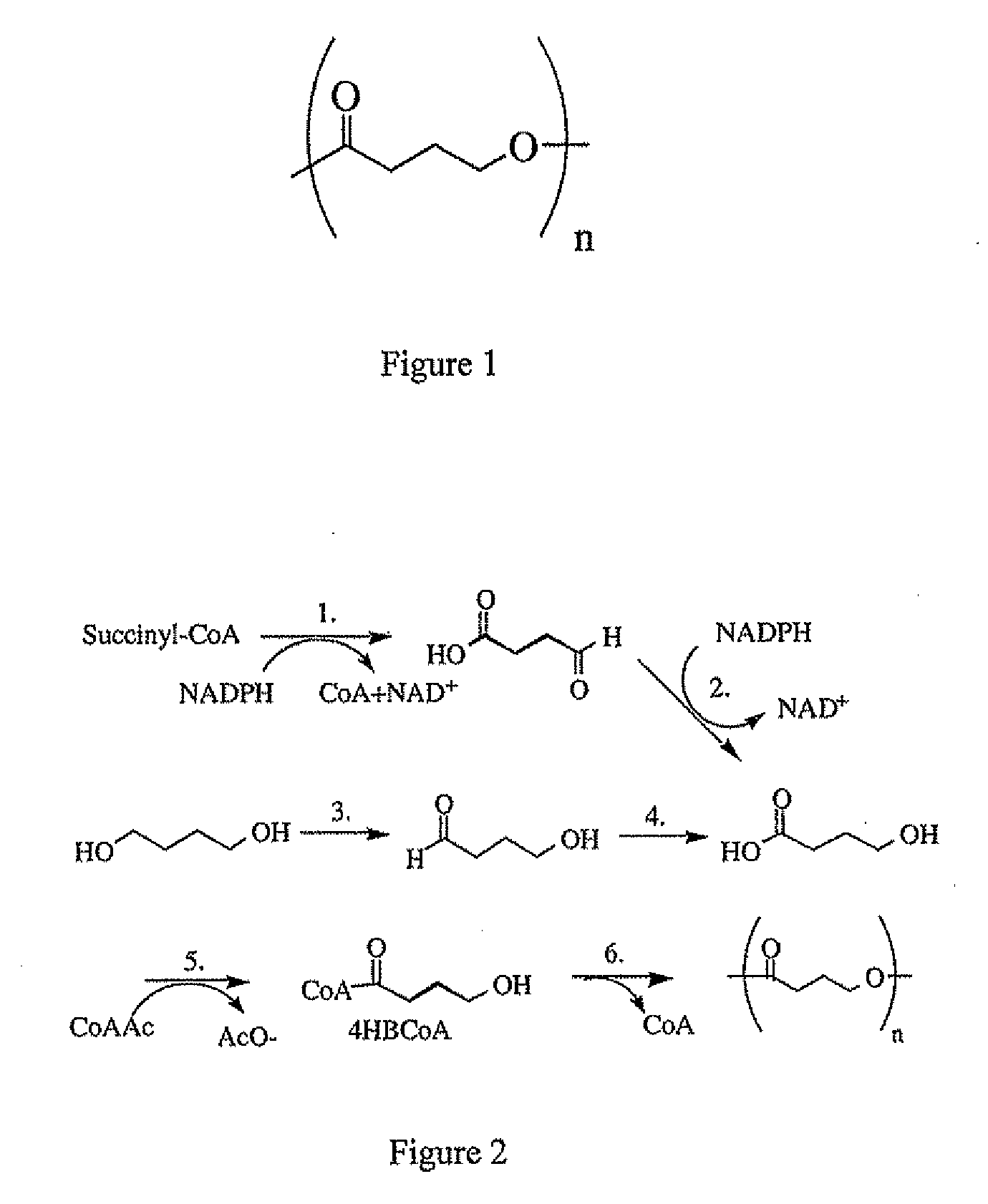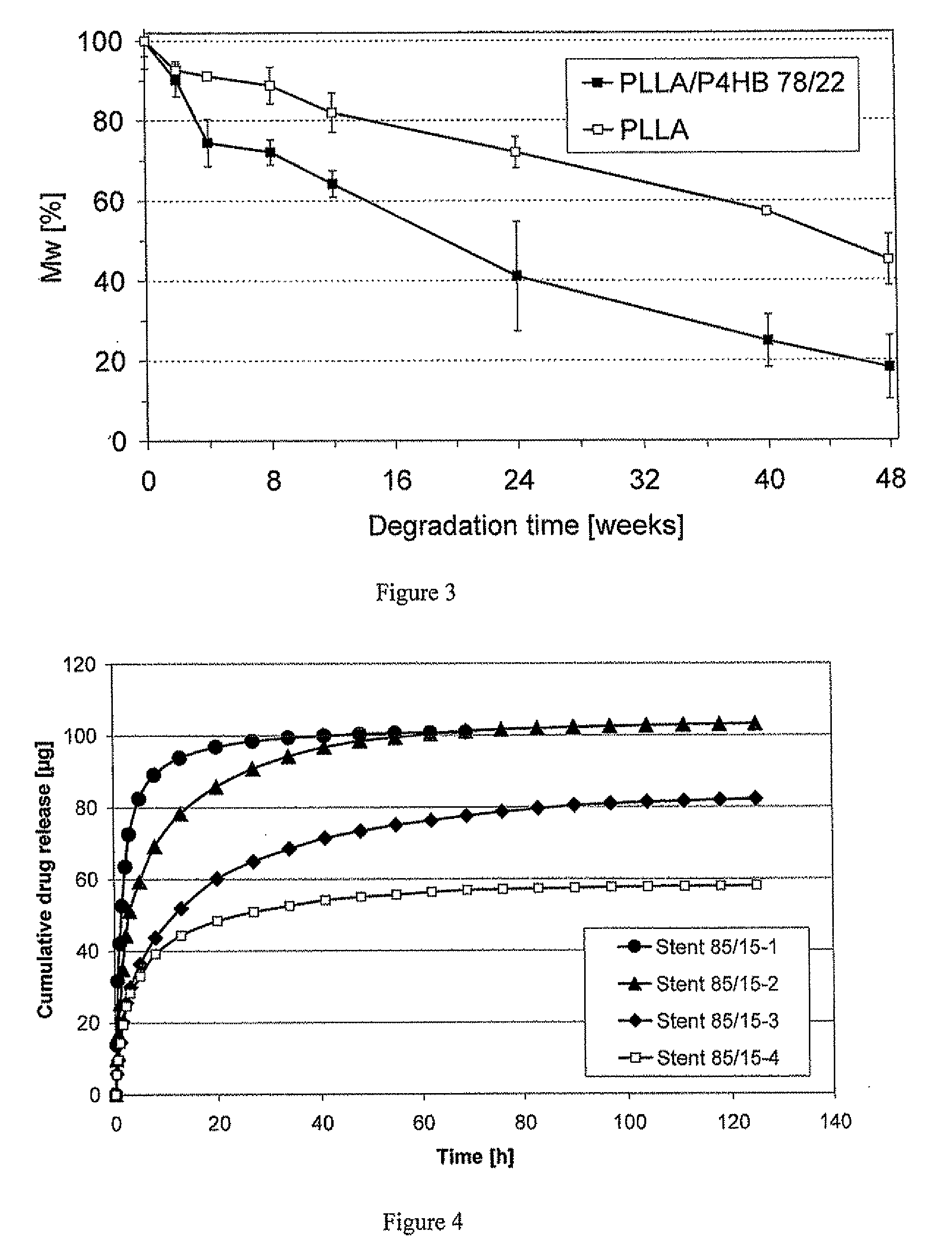Polymeric, degradable drug-eluting stents and coatings
a stent and coating technology, applied in the field of absorbable polymer compositions, can solve the problems of metal stents that are not compatible with certain medical imaging methods, drug can present a serious risk of late thrombosis, metal stents are not compatible with certain methods of medical imaging, etc., to achieve sufficient radial strength, reduce the risk of particulate breaking, and shorten the effect of expansion
- Summary
- Abstract
- Description
- Claims
- Application Information
AI Technical Summary
Benefits of technology
Problems solved by technology
Method used
Image
Examples
example 1
Absorbable Coronary Stent from a Dip-Coated Stent Blank
[0082]Polymer tubes with an inner diameter of 1.0 or 1.4 mm were fabricated by dip-coating of stainless steel male cores into a 2% w / w solution of a preferred composition of 70% PLLA (Resomer® L214 from Boehringer Ingelheim Pharma), 20% P(4HB) (TephaFLEX® biomaterial from Tepha Inc., Mw 300-600 kDa) and 10% TEC in chloroform. The dip-coating procedure was repeated until a mean wall thickness of 160±10 μm of the polymer tubes was achieved. Afterwards, the polymer tubes were removed from the cores and washed twice in methanol and twice in water for 24 h each for solvent removal.
[0083]The polymer tubes were then machined with a CO2 laser for the manufacture of balloon-expandable coronary stents with nominal dimensions in the dilated state of 3.0 and 3.5 mm diameter and various lengths from 10-25 mm, as established by SEM.
[0084]The stents were deployed with a balloon catheter that was inflated to 8 bar within 1 minute. The stents ex...
example 2
Absorbable Coronary Stent from an Extruded Stent Blank
[0085]Polymer tubes with an inner diameter of 1.0 or 1.4 mm and a wall thickness of 150 μm were fabricated by extrusion of a preferred composition of 78% PLLA (Resomer® L214 from Boebringer Ingelbeim Pharma) and 22% P(4HB) (TephaFLEX® biomaterial from Tepha Inc., Mw 300-600 kDa).
[0086]The polymer tubes were then machined with a CO2 or excimer laser for the manufacture of balloon-expandable coronary stents with nominal dimensions in the dilated state of 3.0 and 3.5 mm diameter and various lengths from 10-25 mm.
example 3
Absorbable Polymeric Matrix for a Drug-Eluting Stent Coating
[0087]A 0.3% w / w solution of P(4HB) (TephaFLEX® biomaterial from Tepha, Inc., Mw 300-600 kDa) in chloroform was prepared. Metallic coronary stents were spray-coated with this solution until a mean coating layer thickness of 15-20 microns was achieved. After 24 h storage under vacuum to remove the chloroform, the stents were mounted on standard balloon catheters and afterwards deployed to a nominal diameter of 3.5 mm. Detailed electron micrographs of metallic stent struts coated with P(4HB) before and after stent dilation illustrate the smoothness and integrity of the coating before and after balloon expansion.
PUM
| Property | Measurement | Unit |
|---|---|---|
| Linear density | aaaaa | aaaaa |
| Thickness | aaaaa | aaaaa |
| Thickness | aaaaa | aaaaa |
Abstract
Description
Claims
Application Information
 Login to View More
Login to View More - R&D
- Intellectual Property
- Life Sciences
- Materials
- Tech Scout
- Unparalleled Data Quality
- Higher Quality Content
- 60% Fewer Hallucinations
Browse by: Latest US Patents, China's latest patents, Technical Efficacy Thesaurus, Application Domain, Technology Topic, Popular Technical Reports.
© 2025 PatSnap. All rights reserved.Legal|Privacy policy|Modern Slavery Act Transparency Statement|Sitemap|About US| Contact US: help@patsnap.com



